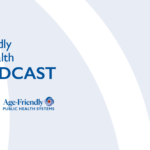Children’s Environmental Health Day- Protecting Children From Environmental Health Threats
October 12th is Children’s Environmental Health Day. It is a day to consider how children’s health can be impacted by the world around them, and what interventions are available to ensure that young people grow up in safe, healthy, and equitable environments. Children should be top of mind while strategizing environmental health efforts, as they are often more susceptible to hazards. Examples include:
Clean Air: Air pollution can impact children before they are even born. From conception to age two, air pollution has been linked with a variety of negative health impacts including early birth, low birth weight, and improper immune system development. Prenatal exposure to air pollution has also been linked with impaired lung function in infants and children, as well as childhood asthma. It is recommended that women especially in early or late stages of pregnancy limit exposure to air pollution as much as possible.
Indoor air quality has a significant impact on children as well. Special attention should be paid to the quality of air at home and at school. Homes should have sufficient ventilation to ensure fresh air is getting cycled into the home. Without proper ventilation, pollution can build up indoors as well as concentrations of dangerous gases such as carbon monoxide and radon.
Schools in particular face challenges such as limited budgets for repairs to ventilation systems and reduced efficiency of older buildings and equipment. The U.S. Environmental Protection Agency (EPA), in partnership with the American Lung Association, has designed the Indoor Air Quality Tools for Schools program to give schools the information and skills they need to manage air quality in a low-cost, practical manner.
Clean Water: Unfortunately, not all communities in the United States have the same access to clean water. A federal emergency was recently declared in Louisiana due to saltwater intrusion, which has contaminated the water system in parts of the state. Louisiana’s Women, Infants, and Children (WIC) program put out a guidance about using bottled water while mixing formula because infants are especially vulnerable. Other hazards, such as lead and PFAS may find their way into drinking water. Clean Water for US Kids provides information on water testing kits as well as information on improving home water filtration.
Extreme Heat: As average temperatures continue to rise year after year, so have instances of heat-related illnesses. Since children have smaller body mass and are more likely to spend extended periods outdoors, they are more susceptible to morbidity and mortality from heat-related causes. It is important that children are adequately hydrated before, during, and after exposure to high outdoor temperatures, wear breathable clothing, or stay inside if temperatures are simply too high.
Pregnant women are also at increased risk, and exposure to high temperatures may have a negative impact on the fetus, especially early in pregnancy. Pregnant women should avoid peak midday temperatures and balance fluid intake with beverages with sodium and other electrolytes.
Lead Exposure: Lead exposure can cause a series of often irreversible health impacts on children including damage to the brain and nervous system, slow growth and development, learning and behavior problems, and hearing and speech problems. These can result in lower IQ, decreased ability to pay attention, and underperformance in school. It is important to identify potential sources of lead around the home and remediate them before they can take hold. Homes built prior to 1978 should be checked for the use of lead paint which can crack and make lead dust, which can be inhaled. If a child may have been exposed to lead, it is important that they receive blood lead testing and follow-up care and referral. According to an analysis from the Health Impact Project eliminating lead hazards from the places where children live, learn, and play could generate approximately $84 billion in long-term benefits per birth cohort.
